A completely unknown style of early Martin guitar came to light in 2017.
Even in a period when C. F. Martin Sr. was continually experimenting with the design of his guitars, this guitar illustrates a number of unique features.
The most obvious feature is the shape of the guitar. Rather than the more familiar Stauffer shape, mostly used by Martin in the 1830s, this guitar has a more modern balance between the width of the upper and lower bouts. The sides meet the neck to give a "slope shoulder" appearance and the bottom of the guitar is very rounded. Compared to most of the other Martin guitars of the period the body is a full inch shorter at only 16". The scale length is 22-1/8" which indicates this is a terz guitar, not unexpected considering the short length of the body.
The sound hole is very small at only 2-7/8" diameter.

The bridge has the "shield" shape typical of the period although the point is much longer than usually seen. The pins for the 3rd and 4th strings are set back from the other bridge pins, also typical for shield bridges. The ivory saddle is quite wide and fits in a quite shallow slot in the bridge. It may have been originally glued in or may have just been held in place by the tension on the strings. The "flower" or "ornament" at the bottom of the bridge is made of ivory.
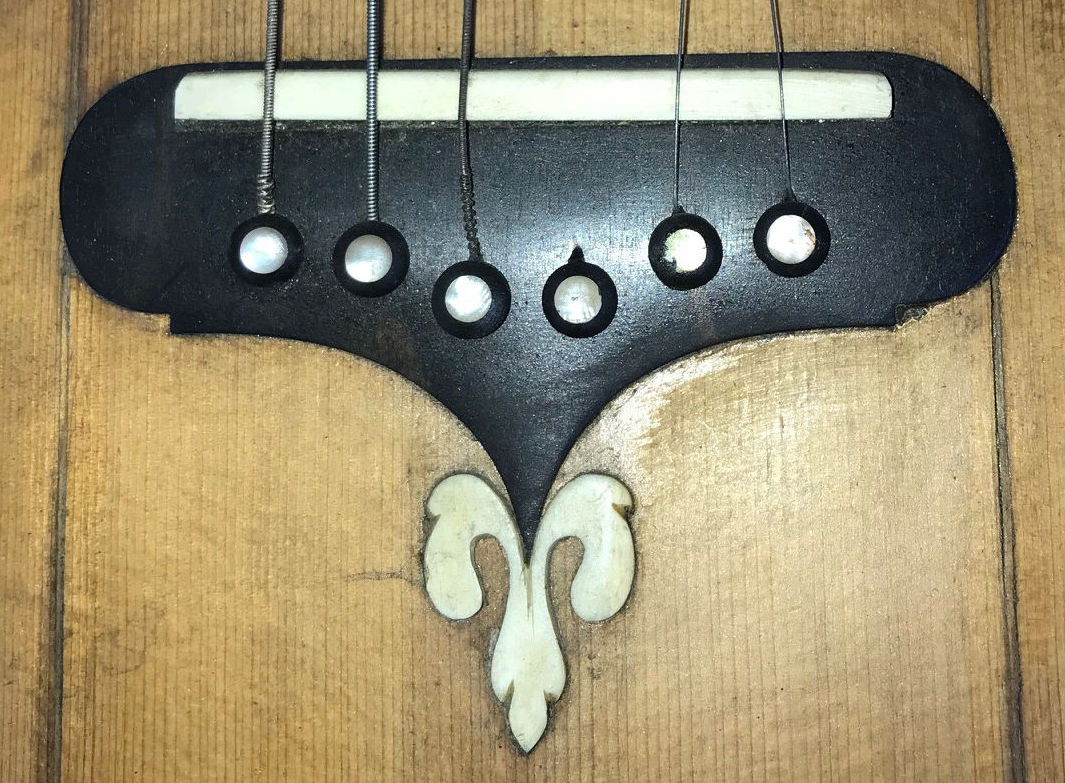
Only about two dozen pre-1840 Martin guitars are currently known and almost no two are exactly the same, especially with regards to the bracing pattern. The earliest New York Martin guitars had a modified type of ladder bracing but by 1836 Martin began to try different bracing patterns, always seeking to improve the tone of his guitars.
The bracing pattern in this guitar consists of two braces in a "V" shape with the base side brace overlapping the treble side brace overlap below the sound hole. The base side brace is heavier than the treble side brace. The bridge is supported by a thin mahogany bridge plate. The solid lining joining the top to the sides is typical for Martin guitars from this period.

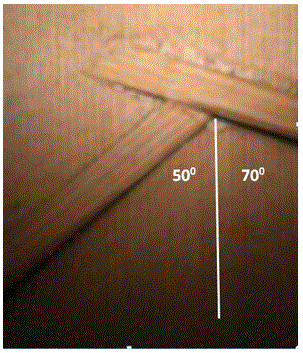
From a historical point of view, one of the most important features of this guitar is the pristine condition of the Martin & Bruno label, the sixth type of label used by Martin while in New York.. The two other extant Martin & Bruno guitars have labels but both are damaged to varying degrees. The number "No. 1231" in the bottom right is a serial number and can be used to determine this guitar was finished in August 1838. (Serial numbers that have been seen cover a range from 1114 to 1304 and correspond to dates from November 1836 to March 1840).
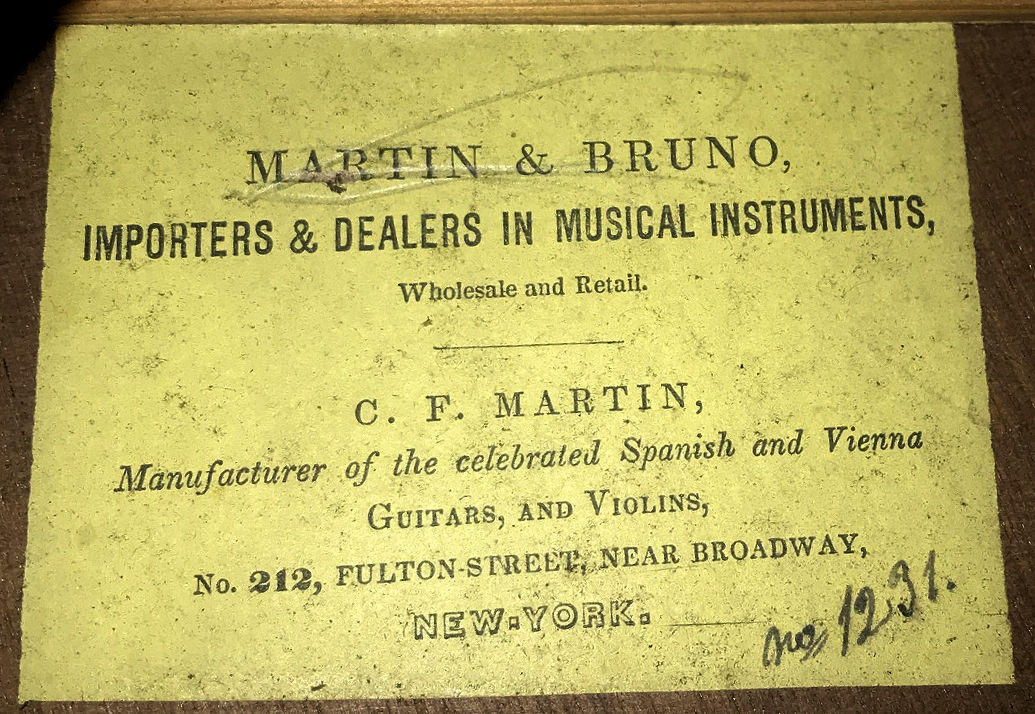
Another interesting feature of this guitar is the paddle peg head fitted with ivory friction pegs. This is the first pre-1840 Martin guitar seen with a peg head although it appears up to 50% Martin's production in the 1830s were made with friction pegs.
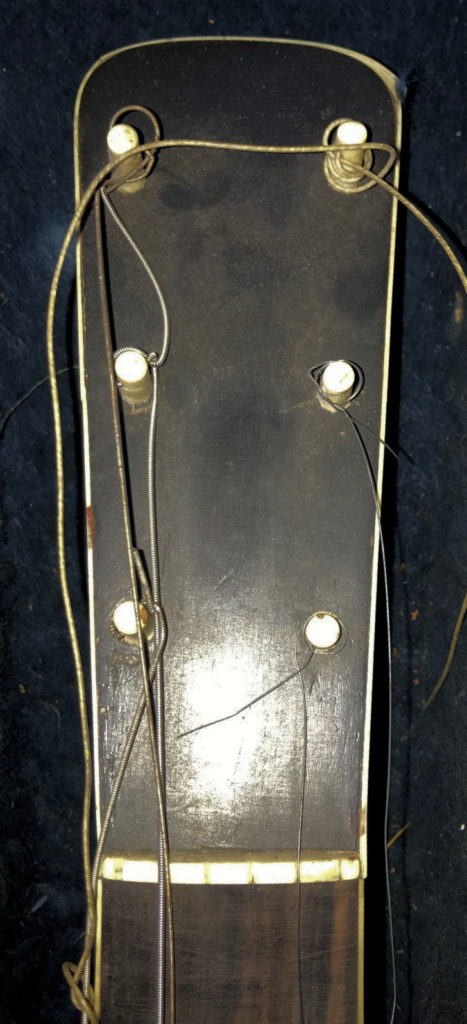
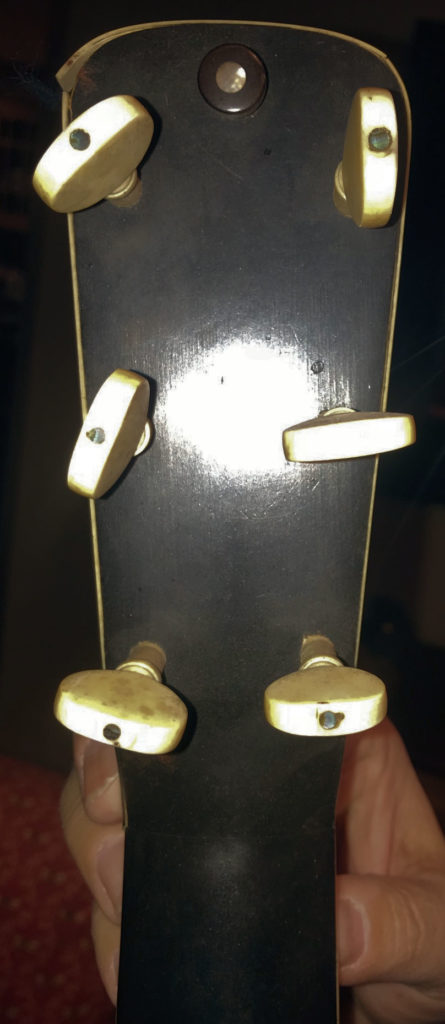
The purfling is a beautiful variety of "herringbone" with an extra black line on each side. This photo also shows to advantage the extremely fine grain of the spruce top, indicative of the supply of European spruce Martin brought with him from Saxony in 1833.
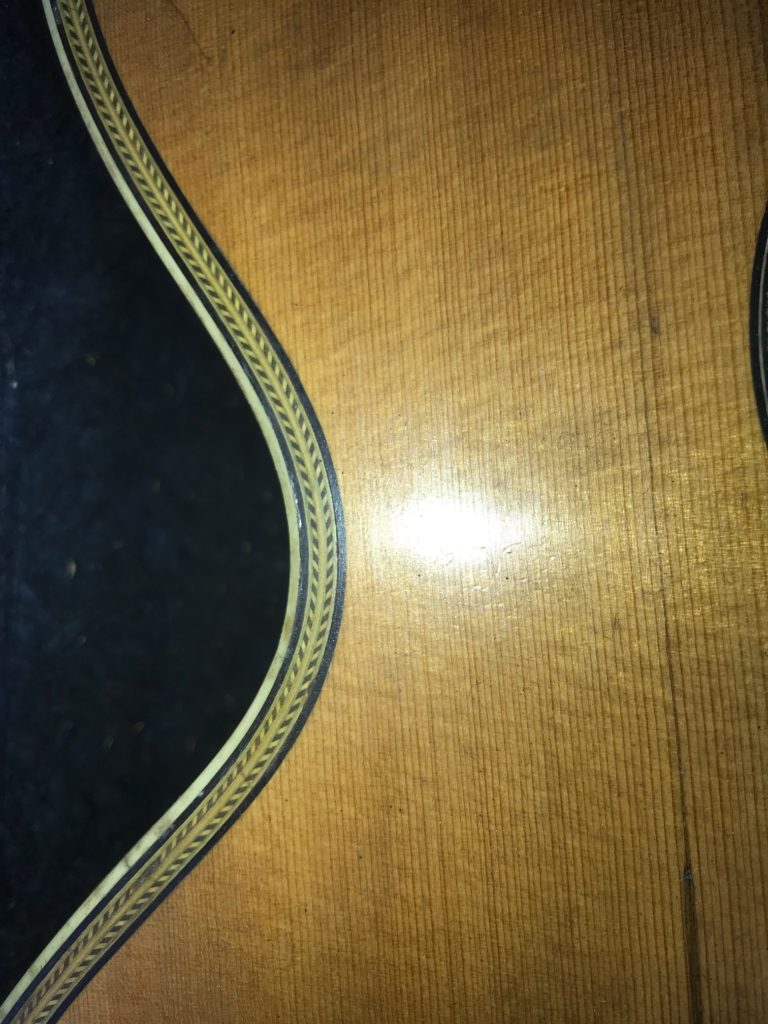
The neck also has a "neck screw" for adjusting the angle of the fingerboard.
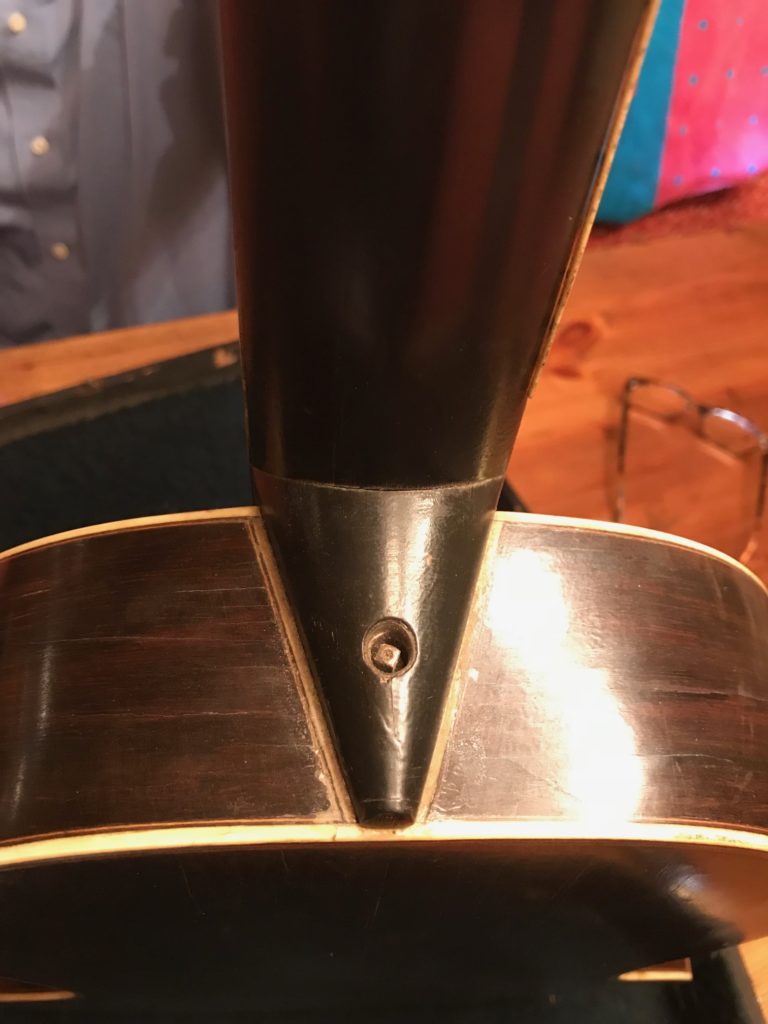
The neck block is also typical for the period, rectangular but with radiused corners. The sound hole decoration is organized into a single ring on the inside of the sound hole.
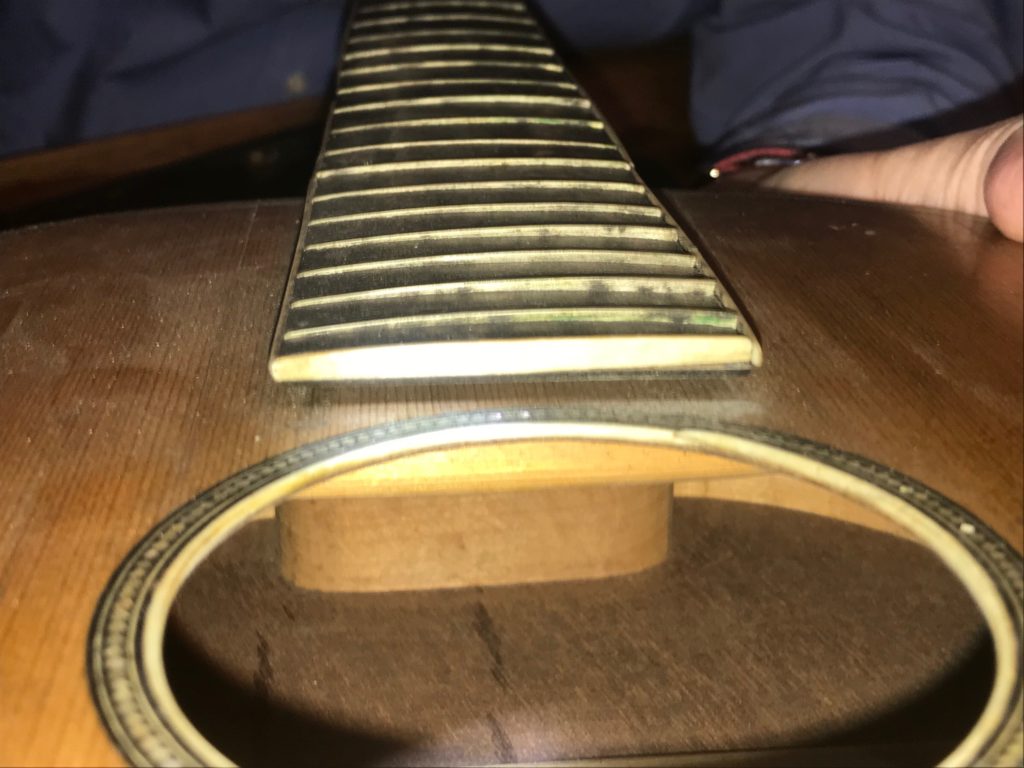
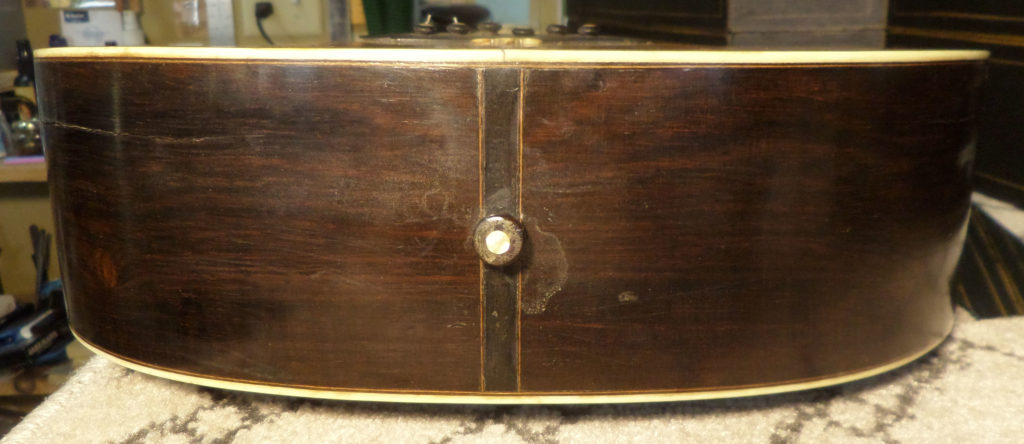
Considering the unusual shape and size of the body of this guitar, the case is undoubtedly original. The case was made fancier with the application of some decorative painting.
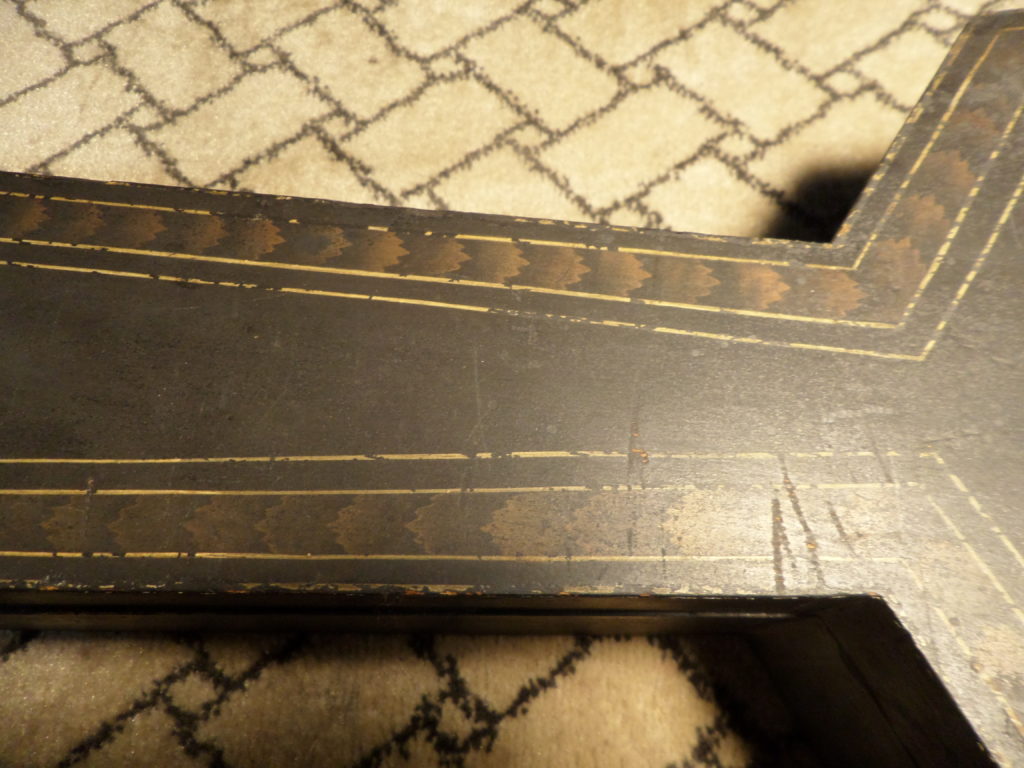
The case even comes with the original lock key!
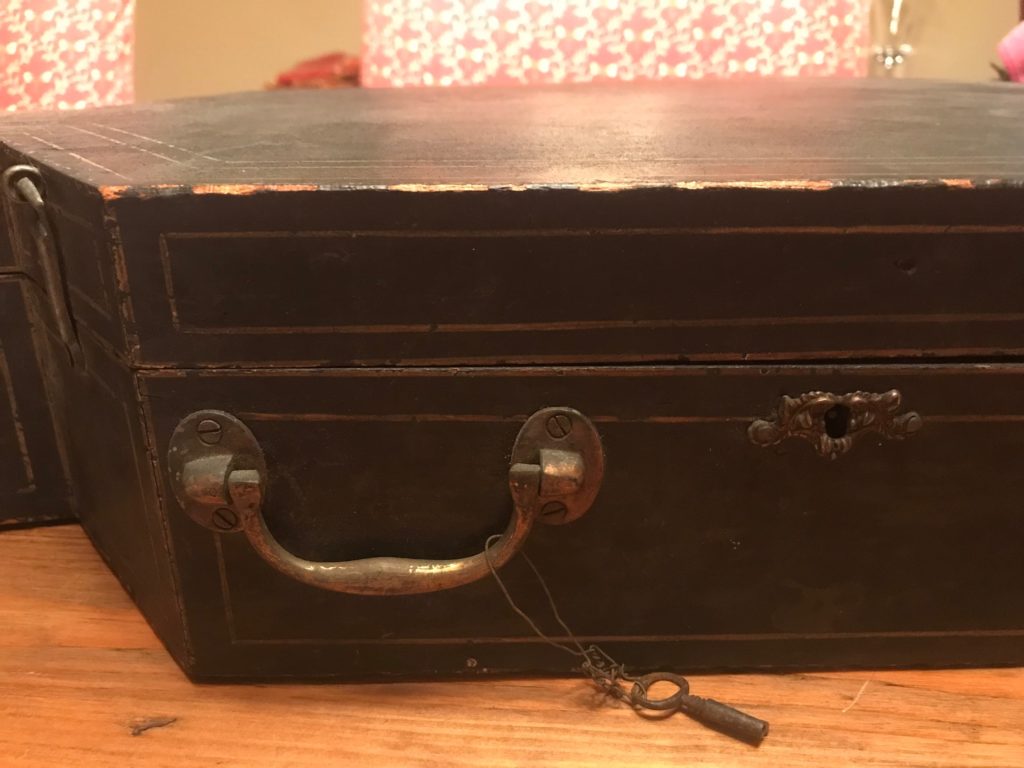

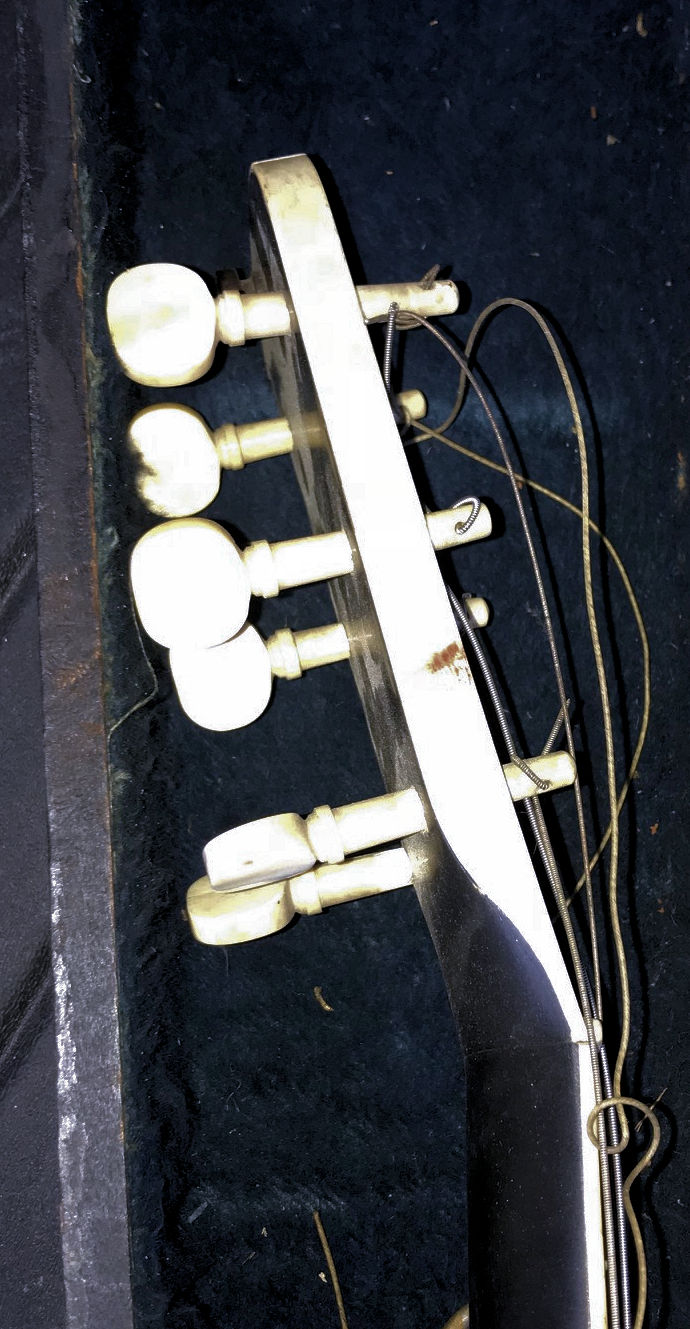
2 thoughts on “1838 Martin & Bruno Terz Guitar, Serial Number 1231”
This is a dandy guitar too! I have never seen it before. Thanks for sharing it.
Such a rare guitar. It has some features of older Martin Guitars like the knob an the rear of the headstock. I really like the feaux painting on the case. This was also popularly used at the time in houses. I restored old houses and that treatment was popular because you could make a cheap piece of wainscoting wood look like a more expensive piece of wood but the pattern was only one paint layer thick. There were specialists who travelled all over and would add this touch to your house. Maybe one of these specialists offered to make this case look special. I really like the pattern and it does fit that age of faeux painting.